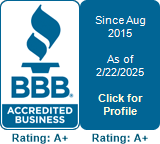Tax season is here, and as a small business owner, you might be wondering which tax return to file. It can be a daunting task for some small business owners, but it is an essential part of running a successful business.
Don’t worry; it’s not rocket science, but it can be a bit confusing, especially if you’re new to running a business. Here’s a quick rundown of the most common types of small businesses and the tax returns they should file.

The first step is to determine your business structure. There are several business structures, including sole proprietorships, partnerships, limited liability companies (LLCs), and corporations. Each structure has different tax requirements, so it’s important to understand your business structure to know which tax form to file.
Sole Proprietorship:
If you’re a sole proprietor and have no employees, you will file your business taxes using a Schedule C (Form 1040). This form reports your business’s net profit or loss, and you will need to attach it to your personal tax return.
Partnership:
If you operate a partnership, you’ll need to file Form 1065, which is a partnership tax return. This form will report the business’s income, deductions, and profits or losses. Each partner will receive a Schedule K-1, which they will use to report their share of the partnership’s income on their personal tax return.
Limited Liability Company (LLC):
LLCs have several different tax options. By default, a single-member LLC files taxes as a sole proprietor, while a multi-member LLC files taxes as a partnership. However, LLCs can also elect to be taxed as an S corporation or a C corporation.
S Corporation:
An S corporation is a type of corporation that elects to pass corporate income, losses, deductions, and credits through to its shareholders. The business files Form 1120S, and each shareholder will receive a Schedule K-1 to report their share of the business’s income on their personal tax return.
C Corporation:
A C corporation is a separate legal entity from its owners. It files its tax return using Form 1120 and pays taxes on its profits. Owners of a C corporation will receive dividends based on their ownership percentage, which are subject to individual income tax.
In conclusion, determining which small business tax return to file depends on your business structure. It’s important to understand this to ensure that you file the correct tax form.
So, there you have it – a quick guide to which tax return to file. Now, go forth and conquer tax season like the small business boss that you are!
If you’re still unsure which form to file, it’s best to consult with a tax professional who can guide you through the process.




